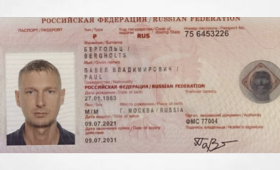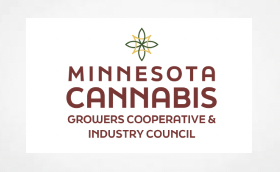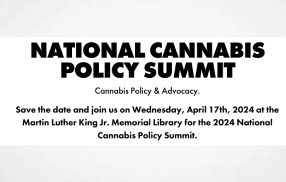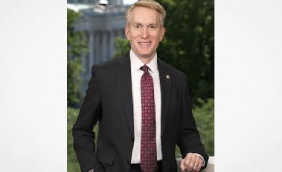24 March 2017
Authored By: Jeff Hergott
WILDEBOER DELLELCE LLP
jhergott@wildlaw.ca | www.wildlaw.ca
T 416 361 4783 | F 416 361 1790 | C 416 457 5969
Suite 800 | Wildeboer Dellelce Place
365 Bay Street, Toronto, ON M5H 2V1
Originally published Wednesday, December 21, 2016
Task Force on Cannabis Legalization and Regulation Delivers Report to Federal Government
On December 13, 2016, the Task Force on Cannabis Legalization and Regulation (the “Task Force”) published its long awaited and much anticipated report, A Framework for the Legalization and Regulation of Cannabis in Canada (the “Report”), containing 80 recommendations for the Federal Government to consider as it prepares to draft legislation giving effect to legalizing and regulating the recreational use of cannabis in Canada, which the Federal Government has undertaken to table in Parliament in the spring of 2017.
Following Justin Trudeau’s election campaign promise to legalize the recreational use of cannabis in Canada, the Minister of Justice and Attorney General of Canada, the federal Minister of Public Safety and Emergency Preparedness, and the federal Minister of Health announced the formation of the Task Force on June 30, 2016, with the mandate of taking a public health approach to providing recommendations on the design of a new legislative and regulatory framework for the legalization and regulation of recreational cannabis in Canada. The Federal Government’s stated objectives include: (i) protecting young Canadians by keeping cannabis out of the hands of youth, (ii) keeping profits associated with cannabis production and distribution out of the hands of criminals, and (iii) protecting the health and safety of Canadians as it pertains to cannabis production and use.
In order to fulfill its mandate, the Task Force engaged in widespread consultation across Canada with, among others, provincial, territorial and municipal governments, legal and medical experts, law enforcement representatives, as well as representatives in other jurisdictions where recreational cannabis has been legalized (e.g., Colorado and Washington in the United States and Uruguay) and received more than 30,000 responses from various individuals and organizations in response to an online public consultation process. In addition to canvassing these various stakeholders, the Task Force also drew from Canada’s own experience and practices from the regulation of alcohol and tobacco, as well as Canada’s existing regulatory framework for medical cannabis.
The Report offers 80 recommendations on the production, distribution and restriction of the use of cannabis and its derivative products, reflecting a balanced, public health approach towards the legalization of cannabis by implementing strict regulations aimed at minimizing the harms associated with cannabis use and reducing the scope and scale of an illicit cannabis market.
Some key recommendations from the Report are summarized below:
- The production of cannabis and its derivative products should be regulated by the Federal Government, in a similar fashion to how the Federal Government presently regulates the production of medical cannabis.
- This is generally perceived as a big win for the 36 currently licensed producers of medical cannabis in Canada that have gone through the rigorous approval process under the existing medical cannabis regime, which has proven to be a barrier to entry into the medical cannabis market.
- The recommended minimum age for purchasing cannabis be set at 18.
- While this is on the lower end of the suggested range of ages, the Task Force is of the view that setting the legal age for purchase too high would not deter youth from gaining access to cannabis through the illicit market. Instead, the Report recommends that provincial and territorial governments should engage youth in education programs to discourage and delay the use of cannabis.
- Because the provinces and territories will have power over the distribution and sale of cannabis, like they do over alcohol and tobacco, each province and territory will be free to increase the minimum age above 18.
- The Task Force recommends allowing personal cultivation of cannabis for non-medical purposes subject to oversight and approval by local authorities.
- Personal cultivation should be limited to four plants per residence, with a height limit of 100 cm per plant. Again, it will be interesting to watch how this recommendation unfolds in Parliamentary debates on the proposed legislation and we suspect that there will be lengthy discussions on this topic. If this recommendation makes its way into the legal regime for recreational cannabis, it will also be interesting to see how the restrictions on the number and size of plants will actually be monitored and/or policed.
- The amount of non-medical cannabis that individuals are permitted to carry on their person in a public place should be limited to 30 grams.
- Comprehensive restrictions on the packaging, branding and marketing of cannabis and its derivative products should be implemented.
- The packaging ought to be plain and clear and include only minimal information on the labels, including price, company name, strain, and levels of delta-9-tetrahydrocannabinol (“THC”) and cannabidiol.
- Any promotion or marketing that is allowed should be restricted in a similar fashion as with tobacco, alcohol and pharmaceutical products. The Report also speaks to restrictions on sponsorship, branding and endorsement, which is an avenue certain licensed producers under the medical cannabis regime have already started to explore in anticipation of the recreational market. This will be an interesting facet to watch for when the Federal Government begins its Parliamentary debates on the proposed legislation, since in an open and free market, with a goal of increasing diversity of product (a recommendation in the Report) and quality of product, branding will be imperative to product differentiation and ownership of market share.
- Any product that is deemed to be “appealing to children,” is packaged to look like candy, is packaged in bright colours, with cartoon characters or other pictures or images that would appeal to children, should be prohibited. This is particularly the case in respect of so called ‘edible’ products that can often take the form of food items appealing to children (e.g., gummy bears).
- There should be variable tax rates or minimum prices linked to THC contents (i.e., higher taxes for cannabis with higher THC levels) in the same way that certain provinces discourage the use of higher content alcohol products by taxing them at a higher rate. We note that the Report did not recommend a differentiated tax regime for medical and recreational sales of cannabis, which has disappointed certain currently licensed producers of medical cannabis.
- A seed-to-sale tracking system is recommended to prevent diversion and assist product quality control.
- Mixed cannabis products should be prohibited (e.g., cannabis-infused alcoholic beverages or cannabis products with tobacco, nicotine or caffeine).
- The regulation of the distribution of cannabis and its derivative products should be shared between provinces and territories, and municipalities.
- Access via both retail distribution and mail-order system should be allowed.
- Where possible, no co-location of alcohol and cannabis should be permitted but when co-location cannot be avoided, appropriate safeguards must be put in place.
- Potential for pharmacy distribution, albeit, making such a change would also require regulatory changes at the provincial and territorial level, given the role that provincial and territorial regulatory and licensing authorities play in regulating the scope of practice of pharmacists.
- There ought to be limits on the density and location of storefronts, including an appropriate distance from schools, community centres and public parks.
- Maintain criminal offences for illicit production, trafficking, possession for the purposes of trafficking, possession for the purposes of export, and import/export, and trafficking to youth.
- Create administrative penalties (with flexibility to enforce more serious penalties) for contraventions of licensing rules on production, distribution and sale.
- A separate medical access framework for patients should be maintained and be re-evaluated in five years.
The Report, for the most part, has been welcomed by Canada’s currently licensed producers of medical cannabis. The recommendation that production be regulated at the federal level and model the current medical cannabis regime in respect of good manufacturing standards will certainly benefit the current producers of medical cannabis who have been pioneers in developing this industry in its regulated form.
Interestingly, the Task Force also recommends that diversity be encouraged, which we see as an opportunity for those producers that have been operating in the so called ‘grey’ (but really illegal) market of supplying dispensaries with their product. At the news conference announcing the Report’s recommendations held on December 13, 2016, the Task Force Chair, the Honourable Anne McLellan, went so far as to say that she would like to see the currently illegal producers come under the legal regime by making application to be a federally-regulated licensed producer when legalization occurs.
An overall takeaway from the Report is the realization that there is still much to research; for example, the science behind the testing for impaired driving under the influence of cannabis is in its infancy and having a framework to test impaired drivers will likely be a condition precedent to the Federal Government enacting any legislation for the legalization of recreational cannabis.
The major hurdle in the effort to legalize cannabis in Canada remains a balancing act between access, affordability, product quality, public safety and the on-going research regarding the health benefits of cannabinoid-based drugs. Although the Report signifies a step forward in the legalization of cannabis in Canada, it also acknowledges that there remains a long and arduous road ahead. Indeed, the Federal Government will move cautiously and slowly.
In his speech from the throne on December 4, 2015, Governor General David Johnston’s delivery of the governing priorities of Justin Trudeau’s Liberals included a pledge to legalize, regulate and restrict access to marijuana. With the Report now delivered, proposed legislation is expected to be tabled in Parliament in the spring of 2017. Any new federal law in Canada must go through a legislative process beginning with an introduction of the bill (the first reading) in the House of Commons, followed by a second reading whereby the bill is debated by the members of the House of Commons and following which a vote is taken to determine whether the bill will proceed to the Committee Stage, wherein every detail of the bill is dissected line by line. Once the Committee has finished studying the bill, it will report back to the House of Commons and a further debate (the third reading) will take place. If the bill passes the third reading, it goes through a similar process in the Senate, before finally receiving Royal Assent and becoming law.
Given the complexity of the task and the level of coordination required among different levels of government, the implementation of the regulatory framework will likely take longer than expected. We expect there to be considerable debate in the House of Commons regarding, among other things, the minimum legal age, the ability to grow cannabis at home and distribution channels. This will not be a rubber stamping process and, while the proposed legislation is anticipated to be tabled in the spring of 2017, we do not foresee that the law(s) will be enacted any time before the third quarter of 2018, and even possibly as late as early 2019, which could align dangerously close to the next federal election. While we presume that the Federal Government will accept a vast majority of the recommendations contained in the balanced and detailed Report, there is no obligation to do so. A change in the Federal Government could also have a major impact on specific recommendations in the Report (e.g., the minimum legal age, growing at home, taxation levels and uses of tax revenue), and even the whole concept of the legalization of the recreational use of cannabis.
Wildeboer Dellelce LLP represents a variety of industry participants, including licensed producers, licensed producer applicants, research and development labs and investment banks raising capital for industry participants, and has acted on numerous transactions and mandates in the medical and recreational marijuana space (where currently permitted, including Colorado, Washington and Uruguay). For more information on how we can assist you in this sector, please contact Charlie Malone (cmalone@wildlaw.ca), Jeff Hergott jhergott@wildlaw.ca) or Danny Kharazmi (dkharazmi@wildlaw.ca).
This update is intended as a summary only and should not be regarded or relied upon as advice to any specific client or regarding any specific situation.
Download a PDF copy of this update here.
















